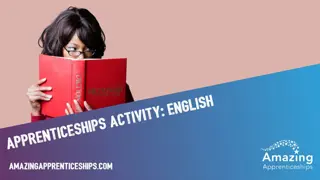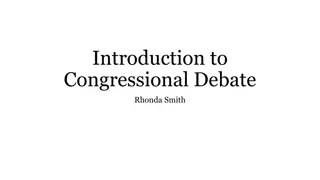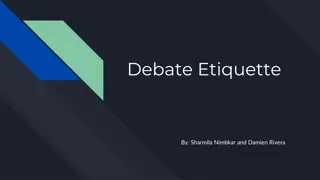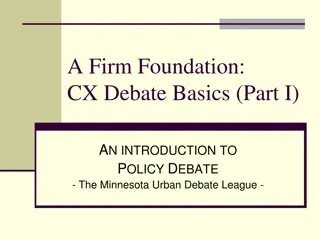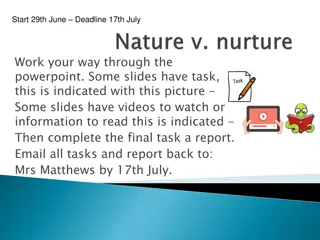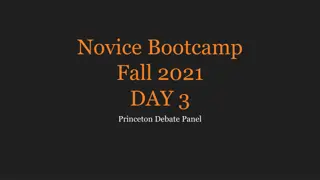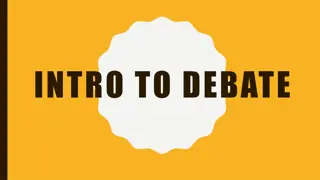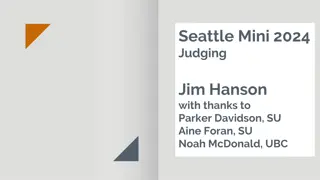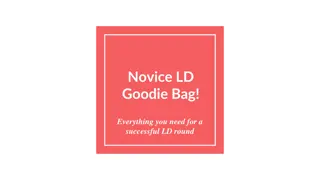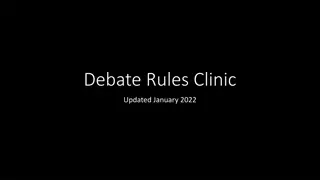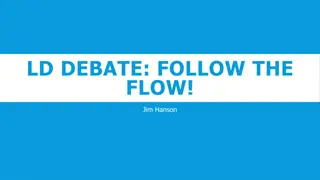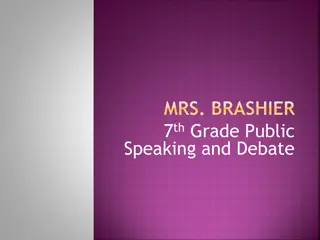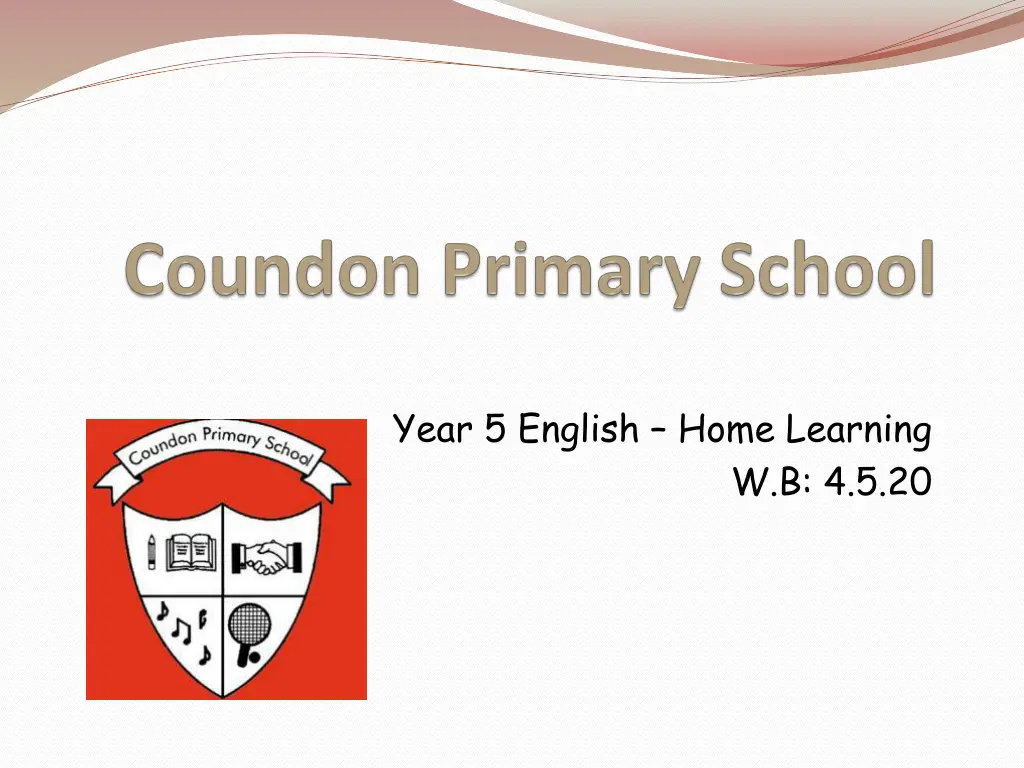
Balanced Argument Learning Activities
Explore spelling lessons, practice tasks, and features of a balanced argument in Year 5 English home learning. Enhance spelling skills with engaging activities and prepare for writing balanced arguments with equal reasons for and against a topic.
Download Presentation

Please find below an Image/Link to download the presentation.
The content on the website is provided AS IS for your information and personal use only. It may not be sold, licensed, or shared on other websites without obtaining consent from the author. If you encounter any issues during the download, it is possible that the publisher has removed the file from their server.
You are allowed to download the files provided on this website for personal or commercial use, subject to the condition that they are used lawfully. All files are the property of their respective owners.
The content on the website is provided AS IS for your information and personal use only. It may not be sold, licensed, or shared on other websites without obtaining consent from the author.
E N D
Presentation Transcript
Year 5 English Home Learning W.B: 4.5.20
Year 5 English Balanced Argument
Lesson 1 - For today s spelling lesson, explore Oxford Owl by using our Year 5 login https://www.oxfordowl.co.uk/ Username: coundonyear5 Password: spellings Click on the Extra Practice Zone Choose Year 5 and try the activity Swap, Double or Drop? You can check your answers as you go along to see how you are doing. If you find the Year 5 a bit tricky, try another year group activity
Lesson 1 - Clouds Choose 5 words from the Year 3 and 4 list that you find tricky and 5 from the Oxford Owl spelling activity. Moons Choose 5 words from the Year 3 and 4 or the Year 5 and 6 list that you find tricky to spell and 5 words from the Oxford Owl spelling activity. Stars Choose 5 words from the Year 5 and 6 list and then use your reading book, a dictionary or words that interest you or choose another 5 words from the Oxford Owl spelling activity. You could really challenge yourself and pick 15 words to practice this week!
Lesson 1 - Spelling practise task Use the techniques suggested in Spellings Practise ideas to help you remember these spellings. Use this lesson to practise spelling your selected words. Practice these spellings each day and ask a parent or carer to test you on Friday. Good luck! How many did you get correct? Are there any words you would like to add to your list for next week?
What does the word balance mean? Lesson 2 KS: To identify the features of a balanced argument What is a balanced argument? A balanced argument needs the same amount of reasons for and against to make it balanced. REMEMBER At the end of this unit, we are going to need to write to Mrs Ellis and explain both sides of the argument discussing whether children should be allowed mobile phones in school. This is called a balanced argument.
Lesson 2 KS: To identify the features of a balanced argument Here are the features of a balanced argument To revise what modal verbs are, click the link below https://www.bbc.co. uk/bitesize/topics/z wwp8mn/articles/zp s4pbk
Lets look at this example of a Balanced Argument. The features have been colour coded to help you. This will help you understand how to write your own balanced argument for Mrs Ellis. Lesson 2 KS: To identify the features of a balanced argument
Look at this example Balanced Argument. The features have been colour coded to help you. Lesson 2 KS: To identify the features of a balanced argument
Look at this example Balanced Argument. The features have been colour coded to help you. Lesson 2 KS: To identify the features of a balanced argument
Look at this example Balanced Argument. The features have been colour coded to help you. Lesson 2 KS: To identify the features of a balanced argument
Now its your turn Lesson 2 - Task KS: To identify the features of a balanced argument Clouds Moons/Stars Extension challenge Read the text Should children be allowed to keep animals as pets? Complete the features activity. Read the text Should children be allowed to stay in at break times? Complete the features activity. After reading the balanced argument, what is your opinion? Write a conclusion stating your opinion now you have read both sides of the argument. Remember to use formal language of debate. Use lesson 2 resources from the blog. Also, remember you can create subheadings in your work book if you do not have a printer.
To make our argument interesting we will need to include a variety of sentence structures using different conjunctions to link our ideas, Lesson 3 KS: To use conjunctions to link ideas What is a main clause? What does a main clause HAVE to contain? Have a go ..Answers are on the next slide! Samira likes football. Ben loves basketball. They all jumped into the car and sat down. The excited boys danced all night to the song.
To make our argument interesting we will need to include a variety of sentence structures, using different conjunctions to link our ideas, Lesson 3 KS: To use conjunctions to link ideas What is a main clause? What does a main clause HAVE to contain? Samira likes football. Ben loves basketball. They all jumped into the car and sat down. The excited boys danced all night to the song.
Lesson 3 KS: To use conjunctions to link ideas There are two main types of conjunction we can use to link words/phrases/clauses together in a sentence. The first one we will look at is Co-ordinating conjunctions.
Lesson 3 KS: To use conjunctions to link ideas Co-ordinating Conjunctions FANBOYS These can be used instead of a full stop between two main clauses. Samira loves football. Ben loves basketball. Samira loves football and Ben loves basketball.
Lesson 3 KS: To use conjunctions to link ideas Co-ordinating Conjunctions FANBOYS
Lesson 3 KS: To use conjunctions to link ideas Co-ordinating Conjunctions FANBOYS
Lesson 3 KS: To use conjunctions to link ideas Subordinating Conjunctions These are used to introduce a subordinate clause. Remember to make sense a sentence has to have a main clause as well. Here is one good way to remember them:
Lesson 3 KS: To use conjunctions to link ideas Subordinating Conjunctions
Lesson 3 KS: To use conjunctions to link ideas Subordinating Conjunctions I SAW A WABUB Have a go ..Answers are on the next slide! Can you spot the subordinate clause and the subordinating conjunction in this sentence? The eager pupils sped into school when the bell rang. Whales give birth to live young as they are mammals.
Lesson 3 KS: To use conjunctions to link ideas Subordinating Conjunctions I SAW A WABUB Can you spot the subordinate clause and the subordinating conjunction in this sentence? The eager pupils sped into school when the bell rang. Whales give birth to live young as they are mammals.
Lesson 3 KS: To use conjunctions to link ideas Subordinating Conjunctions I SAW A WABUB
Lesson 3 KS: To use conjunctions to link ideas Subordinating Conjunctions I SAW A WABUB Complete these sentences using a subordinating conjunction: Heavy snow poured from the sky. The greenhouse got smashed.
Lesson 3 - Task KS: To use conjunctions to link ideas Remember: Co-ordinating conjunctions link two main clauses together (FANBOYS) Subordinating conjunctions start a subordinate clause (I SAW A WABUB) They can go at the start of a sentence but need a comma after! Task: Choose either Clouds, Moons or Stars from 'Lesson 3 Conjunction activity. Complete in your workbooks.
How can you tell which part is arguing for and which part is arguing against the idea? Lesson 4 KS: To use the language of a balanced argument
Lesson 4 KS: To use the language of a balanced argument A balanced argument uses specific types of vocabulary to show the arguments on one side of the arguments compared to the other side. Watch this video to see how a balance argument can be structured and some of the language that can be used.
Lesson 4 KS: To use the language of a balanced argument Show that there are two sides to the arguments. Move the argument to the other side.
Lesson 4 - Task KS: To use the language of a balanced argument Clouds Moons Stars Choose either debate school uniform or zoos . Look at the for and against statements. Create 2 paragraphs using formal language of debate, which clearly show both sides of the argument. Use the word banks to help you. Choose a topic of discussion (tourists at Snowdon, home learning, use of ipads) and use formal language of debate to create 2 paragraphs. These need to clearly state reasons for and reasons against . Use the word bank for support. Use the statements for and against school uniform. Rewrite these sentences using formal language of debate. Use the word banks for support. Extension Add an introduction and conclusion to your balanced argument. The resources for this lesson are included in the blog see Lesson 4 Debate Language activity
Lesson 5 KS: To orally use language of debate Use this time to reflect about what you have learnt this week. In your workbook, jot down all of the things a balanced argument needs to include. Look back over the slides if you would like to check what you have written. Talk to somebody about some of the topics that you have read about or listened to over the past few lessons. - What were your views/opinions? - What are their views/opinions? - Do they agree with what you say? Disagree?
Lesson 5 KS: To orally use language of debate Choose one of the topics from the list. Should zoos be banned? Ask a family member about their thoughts/opinions. Should smoking be banned in public? Listen to what they say .did they use any of the language features you have looked at this week? Should dogs be banned from parks? Write down a list of for and against TASK: Create a balanced argument using the formal language of debate. Is it better to be a child or an adult? Maybe you could video it and send it to your class email for us to see. Should we have school uniform? I wonder whether we would agree or disagree?
Spelling test time! Remember Don t forget to ask somebody if they could test you on your spellings! Good Luck! How many did you get correct? Add any tricky words to your spelling list to practise for next week.

